How to Add Drama to Your Guitar Solos

The focus of this column is simple: to show you how to make your playing more dramatic and epic.
We're going to examine different players from different styles throughout this series, including Randy Rhoads, Stevie Ray Vaughan, Jimi Hendrix, Jason Becker, David Gilmour, Brian May, Yngwie Malmsteen and Buddy Guy (to name just a few), examining their physical and harmonic techniques.
We're also going to examine melodic devices used by composers ranging from Beethoven and Bach to modern masters James Horner and John Williams.
Elements that make something more "dramatic" or "epic" to one listener might not work for someone else. It's completely subjective. But the vast majority of people would agree the climax of the Beatles' "A Day in the Life" is more dramatic than any part of "When I'm Sixty-Four," which is on the same album. (Unless you're some crazed clarinet player, of course.)
EXAMPLE 1:
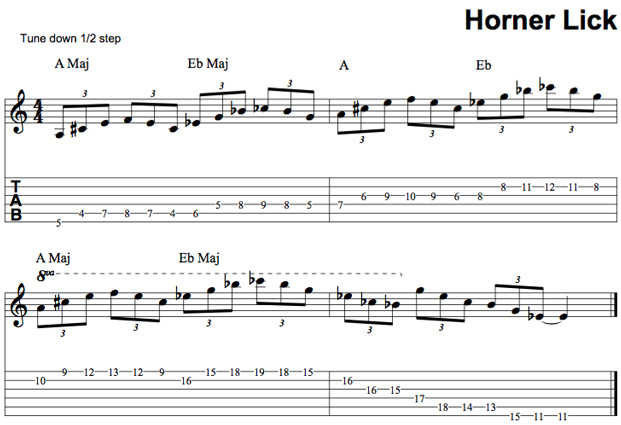
This lick is based on the incredible James Horner, one of the most prolific cinematic composers of our time—and who we lost in 2015. You've all heard Horner's music, whether you realize it or not: Braveheart, Aliens, Avatar, Titanic (the single highest-selling soundtrack of all time) and my personal favorite, Star Trek II: The Wrath of Khan.
A dramatic motif Horner used often was taking a simple major triad (in this case A Maj) and adding a #5th into the arpeggio, so the notes are A, C#, E, F, with resultant tension between the 5th and #5th. To further exploit this, he also would modulate the entire arpeggio up (or down) a b5. This results is an Eb Major Arpeggio and adding the #5th, the notes are Eb, G, Bb, B (Cb, technically).
All the latest guitar news, interviews, lessons, reviews, deals and more, direct to your inbox!
I'm alternate picking throughout the entire climb of arpeggios from A Maj#5 to Eb Maj#5, moving them up in octaves until I hit the 19th fret on the High E, where I now descend within and Eb Maj arpeggio, and I'm popping in #5's on the way down. For this descending part, I'm primarily using economy/sweep picking, but be sure to explore variations that work best for you.
EXAMPLE 2:
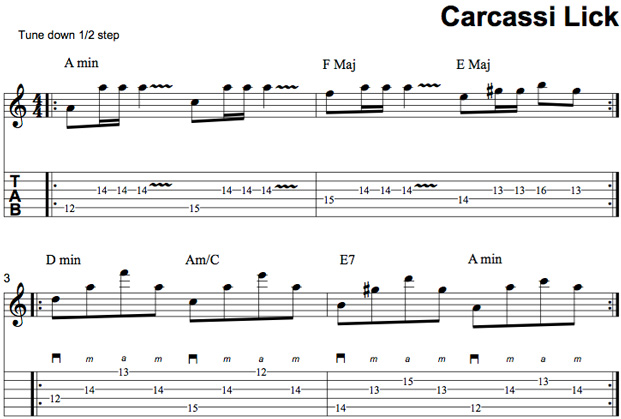
This lick starts the solo to "Arise" by my band, MaelstroM. It's based on Carcassi's Study in A Minor Op. 60 (one of the first classical pieces I learned). What makes this section more dramatic than its simple A Min, C Maj, F Maj, E7 chord progression is the attack and the way it is performed. You can enhance anything simply by having a strong attack on the strings and not being too worried about being "clean" or "precise." Thankfully as a kid my very first exposure to guitar was watching Jimi Hendrix utterly command his Strat in Jimi Plays Berkeley, and I learned a huge lesson ... it's not exactly what you're playing but how you're playing It that makes the biggest impact.
The second part of this lick employs hybrid picking of D min, A min/C, E7 and A min arpeggios. I've always thought the sound of an arpeggio was exciting to begin with, but spreading out the intervals with hybrid picking in an Eric Johnson/Carl Verheyen fashion can make them even more so.
EXAMPLE 3:
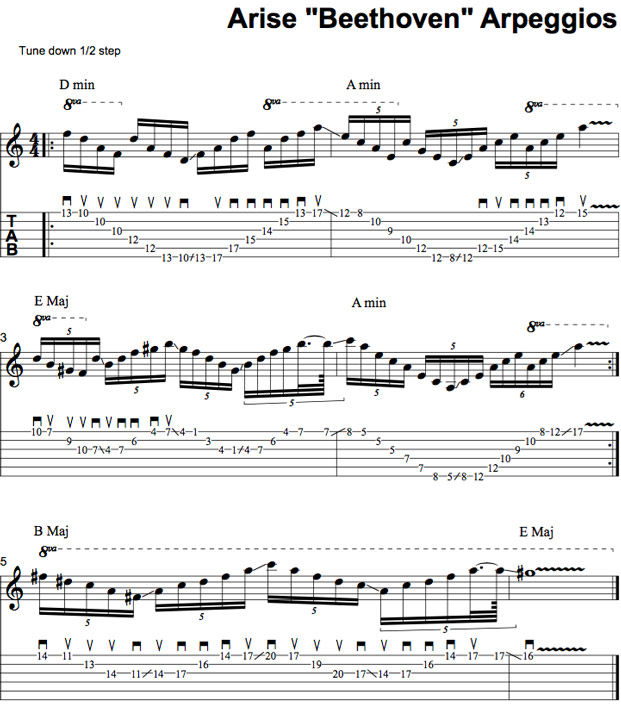
The beginning to Beethoven's 4th Symphony has some of the most hauntingly dramatic notes he ever wrote. For the faster part of the "Arise" solo, I borrowed the chords outlined by Beethoven and arpeggiated them with sweep picking. The chords are D min, A min, E7 (F dim) and A min. The second time around, it goes to a secondary dominant (B7), which definitely adds excitement to the progression, and that is even further enhanced by executing a C diminished arpeggio over B7.
One key thing to remember is at the high point of each arpeggio, I land on a single note with vibrato to end each phrase. This gives the listener a moment to breathe. Fast guitar playing can be very exciting, but if overdone it can be mind numbing and have the opposite effect of what you're going for.
EXAMPLE 4:
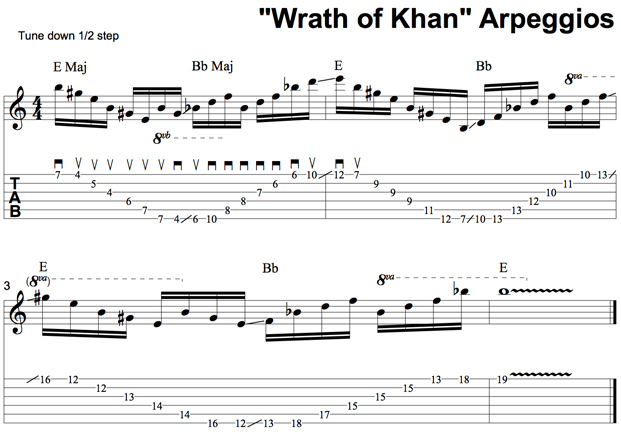
To end the "Arise" solo, I now harmonically revert back to a series of "Horner Changes." Climbing E Maj arpeggios alternating with a dramatic b5 modulation to Bb Maj Arps.
EXAMPLE 5:
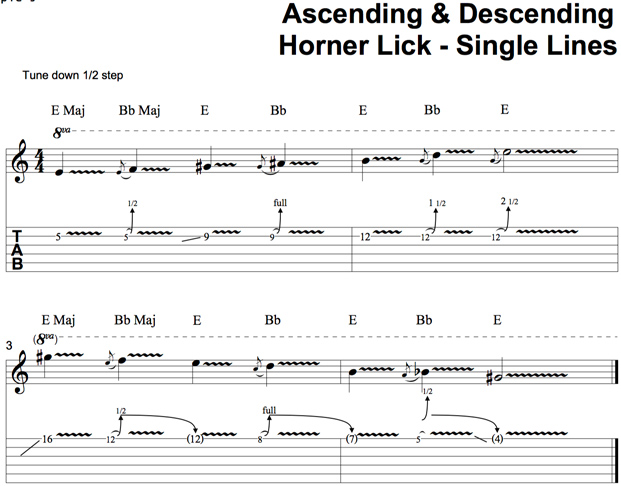
To further exploit the epic changes of E Maj and Bb Maj, I'm also layering in Brian May-style ascending and descending counterpoint lines. What's crucial is to not boringly just hit the notes within the two chords, but to use hyper-bending up and ghost bending down into each chord change. Buddy Guy was a huge influence on me in temrs of this approach; when layered together, it creates an amazing effect.
Enjoy! I look forward to sharing more epicness with you guys soon!
Joey Lodes is the guitarist in MaelstroM. He has lectured at Juilliard, was selected to perform at the Guitar Gods Festival in 2016 with Steve Vai and Yngwie Malmsteen—and his guitar work has been included in courses for TrueFire.com.
